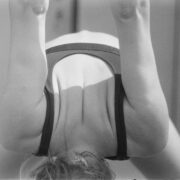
Strengthen Your Core with These Pilates Moves
Pilates is a form of exercise that was developed by Joseph Pilates in the early 20th century. It was originally created as a rehabilitation program for injured soldiers during World War I, but it has since gained popularity as a method of improving strength, flexibility, and overall fitness. One of the key principles of Pilates is core strengthening, which involves targeting the muscles in the abdomen, lower back, and pelvis to improve stability and support for the entire body.
Core strengthening refers to exercises that specifically target the muscles in the core region of the body. The core muscles include the rectus abdominis, transverse abdominis, internal and external obliques, and the muscles of the lower back and pelvis. These muscles work together to provide stability and support for the spine and pelvis, and they play a crucial role in maintaining proper posture and alignment.
Key Takeaways
- Pilates is a form of exercise that focuses on core strengthening and overall fitness.
- A strong core is essential for good posture, balance, and preventing injuries.
- The core includes muscles in the abdomen, back, and pelvis.
- Pilates can improve core strength, flexibility, and balance.
- Essential Pilates exercises for core strength include the plank, bridge, and pelvic tilt.
The Importance of a Strong Core for Overall Fitness
Having a strong core is essential for overall fitness and well-being. The core muscles are responsible for providing stability and support for the entire body, and they play a crucial role in almost every movement we make. Whether we are walking, running, lifting weights, or even just sitting or standing, our core muscles are constantly engaged.
A strong core can improve performance in sports and other physical activities. It can enhance balance and coordination, which can help prevent falls and injuries. It can also improve posture and alignment, which can reduce the risk of developing back pain or other musculoskeletal issues.
In addition to its physical benefits, a strong core can also have a positive impact on mental health. Core strengthening exercises require focus and concentration, which can help improve mindfulness and reduce stress levels. The mind-body connection that is fostered through Pilates can also promote a sense of calmness and well-being.
Understanding the Anatomy of the Core
To understand how Pilates can help strengthen the core, it is important to have a basic understanding of the muscles that make up this region of the body. The core muscles include the rectus abdominis, which is commonly referred to as the “six-pack” muscle, the transverse abdominis, which is a deep muscle that wraps around the abdomen like a corset, and the internal and external obliques, which are responsible for rotating and flexing the trunk.
The core muscles also include the muscles of the lower back and pelvis, such as the erector spinae, quadratus lumborum, and gluteal muscles. These muscles work together to provide stability and support for the spine and pelvis, and they play a crucial role in maintaining proper posture and alignment.
When these muscles are weak or imbalanced, it can lead to poor posture, back pain, and other musculoskeletal issues. By targeting these muscles through Pilates exercises, it is possible to strengthen and tone them, improving stability and support for the entire body.
The Benefits of Pilates for Core Strengthening
| Benefits of Pilates for Core Strengthening |
|---|
| Improved posture |
| Reduced risk of injury |
| Increased flexibility |
| Better balance and stability |
| Enhanced athletic performance |
| Reduced back pain |
| Improved breathing |
| Increased body awareness |
| Stress relief |
Pilates is an effective method of strengthening the core because it specifically targets these muscles through a series of controlled movements. Unlike traditional strength training exercises that focus on isolated muscle groups, Pilates exercises engage multiple muscle groups at once, resulting in a more functional and integrated approach to core strengthening.
In addition to targeting the core muscles, Pilates also helps improve overall strength, flexibility, and posture. The slow and controlled movements used in Pilates require deep concentration and focus, which can help improve body awareness and alignment. This can lead to improved posture and reduced risk of developing back pain or other musculoskeletal issues.
Pilates also emphasizes proper breathing techniques, which can help improve lung capacity and oxygenation of the blood. This can lead to increased energy levels and improved overall fitness.
Essential Pilates Exercises for Core Strength
There are many different Pilates exercises that can be used to strengthen the core. Here are a few examples of basic Pilates exercises for core strengthening:
1. The Hundred: Lie on your back with your knees bent and feet flat on the floor. Lift your head, neck, and shoulders off the mat and extend your arms by your sides. Pump your arms up and down while inhaling for five counts and exhaling for five counts. Repeat for a total of ten breaths.
2. The Roll-Up: Lie on your back with your legs extended and arms reaching overhead. Inhale as you lift your head, neck, and shoulders off the mat and reach your arms towards your toes. Exhale as you roll up to a seated position, reaching towards your toes. Inhale as you roll back down to the starting position.
3. The Plank: Start in a push-up position with your hands directly under your shoulders and your body in a straight line from head to heels. Engage your core muscles and hold this position for 30 seconds to one minute.
These are just a few examples of basic Pilates exercises for core strengthening. It is important to perform each exercise correctly to ensure maximum benefit and prevent injury.
Beginner Pilates Moves for Core Strengthening
For those who are new to Pilates or have limited experience with core strengthening exercises, there are several beginner-friendly moves that can help build strength and stability in the core.
1. The Single Leg Stretch: Lie on your back with your knees bent and feet flat on the floor. Lift your head, neck, and shoulders off the mat and extend one leg out in front of you while pulling the other knee into your chest. Switch legs, pulling the opposite knee into your chest while extending the other leg out in front of you. Continue alternating legs for a total of 10-12 repetitions.
2. The Double Leg Stretch: Lie on your back with your knees bent and feet flat on the floor. Lift your head, neck, and shoulders off the mat and bring both knees into your chest. Extend your arms and legs out in opposite directions, reaching towards the ceiling. Circle your arms around and bring your knees back into your chest. Repeat for a total of 10-12 repetitions.
3. The Bridge: Lie on your back with your knees bent and feet flat on the floor. Place your arms by your sides with your palms facing down. Press through your heels and lift your hips off the mat, engaging your glutes and core muscles. Hold this position for a few seconds, then lower back down to the starting position. Repeat for a total of 10-12 repetitions.
These beginner Pilates moves are a great way to start building strength and stability in the core. As you become more comfortable with these exercises, you can gradually increase the number of repetitions or add additional exercises to your routine.
Intermediate Pilates Exercises for Core Strength
Once you have built a solid foundation of core strength through beginner Pilates moves, you can start incorporating more intermediate-level exercises into your routine. These exercises will challenge your core muscles even further and help you continue to progress in your Pilates practice.
1. The Side Plank: Start in a side-lying position with your bottom elbow directly under your shoulder and your legs extended out straight. Lift your hips off the mat, creating a straight line from head to heels. Engage your core muscles and hold this position for 30 seconds to one minute. Repeat on the other side.
2. The Teaser: Lie on your back with your legs extended and arms reaching overhead. Inhale as you lift your head, neck, and shoulders off the mat and reach your arms towards your toes. Exhale as you roll up to a seated position, reaching towards your toes. Inhale as you roll back down to the starting position. Repeat for a total of 10-12 repetitions.
3. The Scissors: Lie on your back with your legs extended and arms by your sides. Lift your head, neck, and shoulders off the mat and extend one leg up towards the ceiling while lowering the other leg towards the floor. Switch legs, scissoring them up and down while keeping your core engaged. Continue alternating legs for a total of 10-12 repetitions.
These intermediate Pilates exercises will challenge your core muscles and help you continue to build strength and stability. As with any exercise, it is important to listen to your body and only progress to more advanced exercises when you feel ready.
Advanced Pilates Moves for Core Strengthening
For those who have a high level of core strength and are looking for an additional challenge, there are several advanced Pilates exercises that can take your core strengthening routine to the next level.
1. The Corkscrew: Lie on your back with your legs extended and arms by your sides. Lift your head, neck, and shoulders off the mat and extend both legs up towards the ceiling. Circle your legs in a clockwise direction, then reverse the direction and circle them counterclockwise. Continue circling for a total of 10-12 repetitions.
2. The Swan: Lie on your stomach with your hands under your shoulders and elbows bent. Press through your hands and lift your upper body off the mat, keeping your hips grounded. Extend your spine as you lift, creating a gentle arch in your back. Lower back down to the starting position with control. Repeat for a total of 10-12 repetitions.
3. The Jackknife: Lie on your back with your legs extended and arms reaching overhead. Inhale as you lift your head, neck, and shoulders off the mat and reach your arms towards your toes. Exhale as you roll up to a seated position, reaching towards your toes. Inhale as you roll back down to the starting position. From here, lift your legs up towards the ceiling and lower them back down towards the mat, keeping your core engaged. Repeat for a total of 10-12 repetitions.
These advanced Pilates exercises require a high level of core strength and control. It is important to progress to these exercises gradually and only attempt them when you feel ready.
Pilates Equipment for Core Strengthening
While Pilates can be done with just a mat, there are several pieces of equipment that can be used to enhance core strengthening exercises. These include the reformer, the Cadillac, the Wunda Chair, and the Pilates barrel.
The reformer is perhaps the most well-known piece of Pilates equipment. It consists of a sliding carriage that is attached to springs and pulleys, which provide resistance for various exercises. The reformer can be used to target the core muscles in a variety of different positions, including lying down, sitting, kneeling, and standing.
The Cadillac is another piece of Pilates equipment that can be used for core strengthening. It consists of a bed-like frame with various bars and straps attached to it. The Cadillac can be used to perform a wide range of exercises that target the core muscles in different positions and angles.
The Wunda Chair is a compact piece of Pilates equipment that can be used for core strengthening exercises. It consists of a padded seat with springs and handles attached to it. The Wunda Chair can be used to perform a variety of different exercises that target the core muscles in a seated or standing position.
The Pilates barrel is another piece of equipment that can be used for core strengthening exercises. It consists of a curved barrel shape with padding on top. The Pilates barrel can be used to perform a variety of different exercises that target the core muscles in a seated, kneeling, or lying down position.
Tips for Maximizing Your Pilates Core Strengthening Routine
To get the most out of your Pilates core strengthening routine, it is important to practice regularly and consistently. Aim to incorporate Pilates into your fitness routine at least two to three times per week. This will allow your muscles to adapt and strengthen over time.
In addition to regular practice, it is also important to focus on proper form and technique. Pilates exercises are most effective when performed with precision and control. Take the time to learn the correct alignment and engage your core muscles throughout each exercise.
It can also be helpful to work with a certified Pilates instructor, especially if you are new to Pilates or have specific goals or limitations. A qualified instructor can provide guidance and feedback to ensure that you are performing the exercises correctly and safely.
Finally, listen to your body and make modifications as needed. It is important to work within your own limits and not push yourself too hard. If an exercise feels too challenging or causes pain or discomfort, it is important to modify or skip that exercise altogether.
In conclusion, Pilates is an effective method of strengthening the core and improving overall fitness. By targeting the core muscles through a series of controlled movements, Pilates can help improve stability, support, and alignment for the entire body. Whether you are a beginner or an advanced practitioner, there are a variety of Pilates exercises that can be used to strengthen the core and enhance overall fitness. By incorporating Pilates into your fitness routine on a regular basis and focusing on proper form and technique, you can maximize the benefits of this powerful form of exercise.
FAQs
What is Pilates?
Pilates is a form of exercise that focuses on strengthening the core muscles, improving flexibility, and enhancing overall body control and balance.
What are the benefits of Pilates exercises for core strength?
Pilates exercises can help improve posture, reduce back pain, increase flexibility, and enhance overall body strength and control. They can also help improve balance and coordination.
What are some examples of Pilates exercises for core strength?
Some examples of Pilates exercises for core strength include the plank, the bridge, the hundred, the teaser, and the side plank.
Do I need any special equipment to do Pilates exercises for core strength?
While some Pilates exercises may require equipment such as a Pilates ball or resistance bands, many can be done with just a mat and your own body weight.
Is Pilates suitable for beginners?
Yes, Pilates can be suitable for beginners. However, it is important to start with basic exercises and gradually progress to more advanced ones as your strength and flexibility improve.
Can Pilates exercises for core strength help with weight loss?
While Pilates exercises can help improve overall body strength and control, they may not necessarily lead to significant weight loss on their own. However, incorporating Pilates into a well-rounded exercise and nutrition plan can be beneficial for weight management.



















Hey there! Do you know if they make any plugins to help with SEO?
I’m trying to get my blog to rank for some targeted keywords but
I’m not seeing very good gains. If you know of any please share.
Many thanks! You can read similar text here: Eco blankets